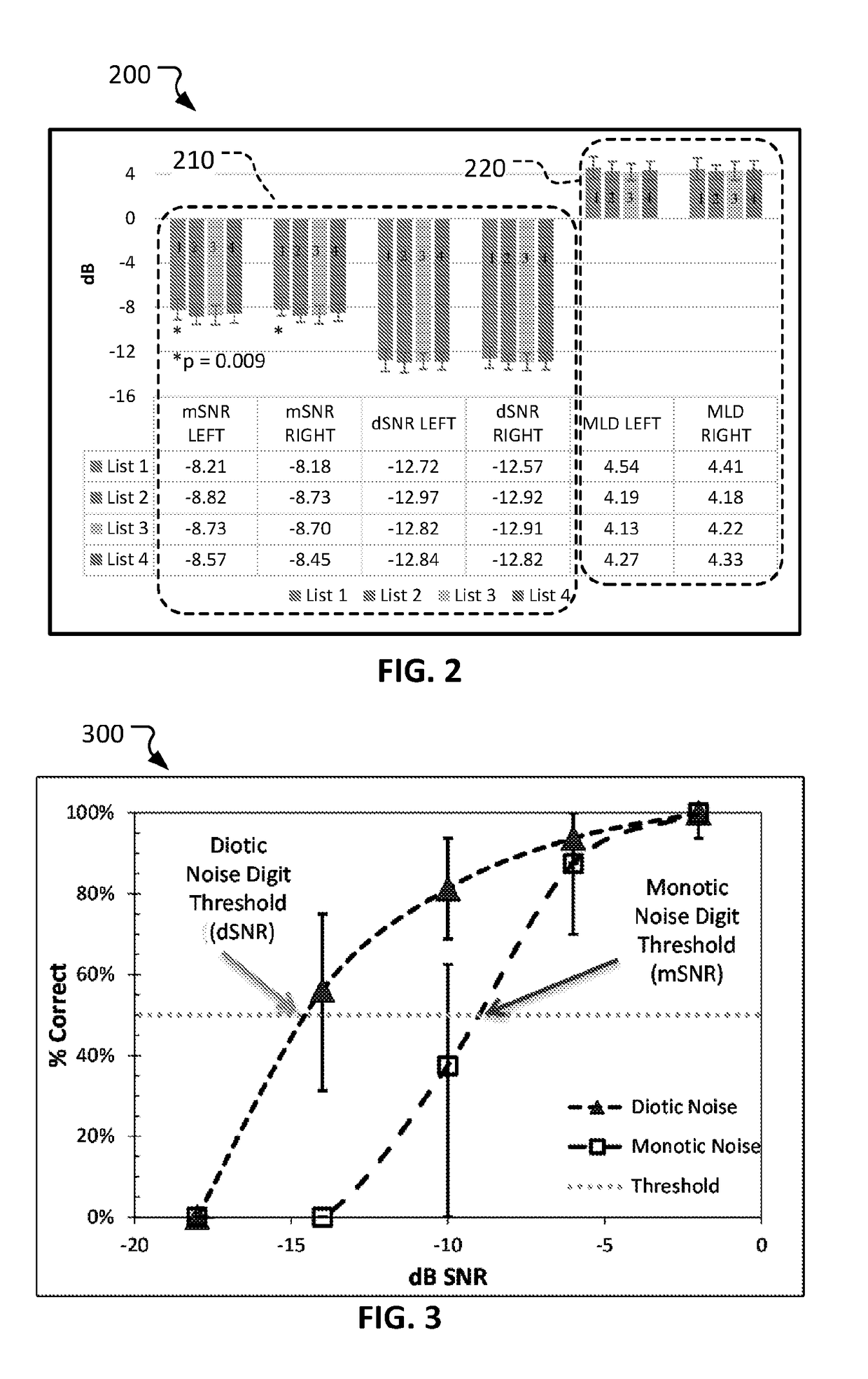Audiology testing techniques
a technology applied in the field of audiology and otology testing, can solve the problems of poor detection of functional hearing, poor detection of central auditory disease and degeneration, and adversely affecting the understanding of speech in the presence of noise, etc., and achieve the effect of accurate hearing assessmen
- Summary
- Abstract
- Description
- Claims
- Application Information
AI Technical Summary
Benefits of technology
Problems solved by technology
Method used
Image
Examples
examples
[0052]A study was performed in which two groups of participants were tested using the audiology test methods described herein. A “young group” consisted of 53 normal hearing young adults; 18 males, 35 females (Mean age=23.4 years, range=18−33 years). All passed pure-tone hearing screen (octave frequencies 0.25-8 kHz) and SCAN-3 Screening Test (Keith, 2009). An “older group” consisted of 45 patients seen for routine hearing checks; 17 males, 28 females (Mean age=39.5 years; range=28−88 years). All had pure-tone thresholds at 0.5, 1, and 2 kHz≤25 dB HL.
[0053]Each participant of the two groups was subjected to the MLDD test procedure. Single-digit stimuli were presented at a fixed level of 48 dB HL. Speech-shaped background noise at 50, 54, 58, 62 dB HL was presented. The digit recognition threshold (50% detection level) SNRs were determined for the monotic (SmNm) and diotic (SmNo) presentation conditions (mSNR and dSNR respectively).
[0054]The study's objectives included: (i) establish...
PUM
 Login to View More
Login to View More Abstract
Description
Claims
Application Information
 Login to View More
Login to View More - R&D
- Intellectual Property
- Life Sciences
- Materials
- Tech Scout
- Unparalleled Data Quality
- Higher Quality Content
- 60% Fewer Hallucinations
Browse by: Latest US Patents, China's latest patents, Technical Efficacy Thesaurus, Application Domain, Technology Topic, Popular Technical Reports.
© 2025 PatSnap. All rights reserved.Legal|Privacy policy|Modern Slavery Act Transparency Statement|Sitemap|About US| Contact US: help@patsnap.com



